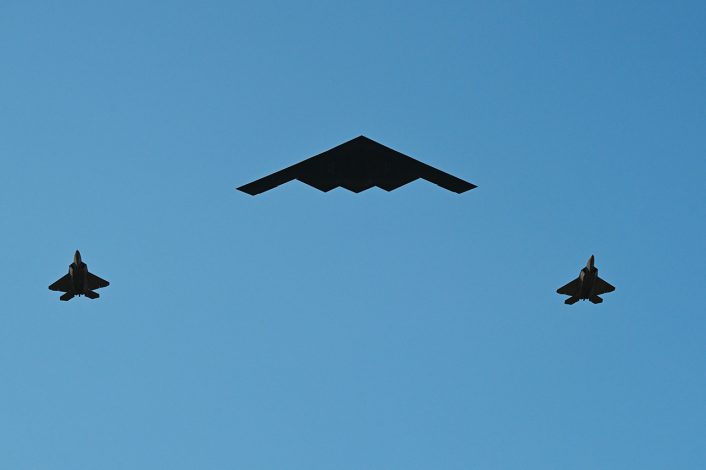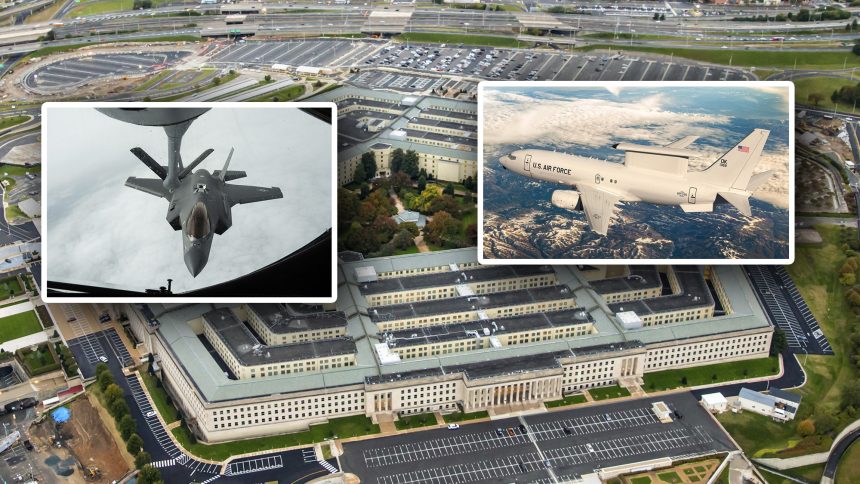Sixteen retired USAF officials joined with the Air & Space Forces Association to issue an open letter to Congress setting out their case opposing U.S. Government military spending plans.
Proposals included in the Pentagon’s 2026 budget which would have seen a reduction in the number of F-35s procured, as well as the complete cancellation of the U.S. Air Force’s E-7 Wedgetail orders, have been sharply opposed by a group of retired senior USAF officers. In their open letter, which was written on behalf of the Air & Space Forces Association’s 125,773 members, they say that they “believe such reductions will severely and unnecessarily undermine our service members’ ability to deter, and if necessary, prevail in future conflicts believe such reductions will severely and unnecessarily undermine our service members’ ability to deter, and if necessary, prevail in future conflicts.”
Among the retired officers listed as signatures to the letter are former commanders of the U.S. Northern Command (NORTHCOM), U.S. Strategic Command (STRATCOM), Air Force Global Strike Command (AFGSC), and Air Combat Command (ACC). Six signatories are former Chiefs of Staff of the U.S. Air Force and two previously held the NATO position of Supreme Allied Commander, Europe (SACEUR).
AFA leaders and the former four-stars argue that current budgets are insufficient given the ongoing requirement to field 1,763 F-35As to fully equip the Air Force to meet the National Defense Strategy.
MORE: https://t.co/kO4q97yjaH#AirForce #USAF #Airman #AFAinAction pic.twitter.com/Qfm5zFX9qv
— Air & Space Forces Association (@AFA_Air_Space) July 8, 2025
Referring to the proposition of introducing the E-2 Hawkeye into USAF service as a stopgap between the E-3 Sentry and space-based early warning systems, the letter claims that the E-2 aircraft is unable to properly fulfill the requirements of theater-wide command and control. Compared to the E-7’s standard mission crew of ten, with the capacity to carry up to 21 personnel in total, the E-2 is limited by size to just three mission systems operators alongside the two pilots.

The officers say that they “have high confidence the U.S. Space Force will develop and deploy a space-based air battle management system,” but, given the technological and operational complexity of such a system “the timeline to success is unclear”. With the importance of battlespace management in modern warfare, the letter posits that there is too much risk in not acquiring the E-7 and putting the Air Force’s capabilities in emerging conflicts under threat if replacement technologies are not yet ready.
As well as the E-7, the letter also sets out an argument in favor of retaining planned buys of the F-35 Lightning II at previously agreed levels. We reported on Jun. 11, 2025, that the Department of Defense was seeking to reduce F-35 deliveries over the coming year by up to 50%. With Operation Midnight Hammer fresh in the minds of many, the letter evokes the mission’s success and highlights the use of F-35s as part of the defensive counter air portion of the raid. It also notes the extensive use of F-35s in Israel’s strikes against Iran, which apparently used secret extended range modifications to the aircraft – now the U.S. Air Force is seeking its own external fuel tanks for their F-35s.
“F-35As were integral to the success of Operation Midnight Hammer, but also crucial to the Israeli Air Force’s ability to crush Iran’s air defenses and swiftly achieve air superiority over Iran,” the letter states. “While the F-35 has experienced its share of developmental challenges, operationally it has demonstrated spectacularly its decisive warfighting capabilities in combat over Iran.”

Referring directly to the growing concern that the People’s Republic of China may launch an attack on Taiwan, the letter claims that “time is of the essence”, adding that “if conflict does come, there will be no more decisive question than who controls the skies over the Pacific.”
The letter does, however, note the unusual move by the House Appropriations Committee in coming up with their own budget proposal in response to a lack of a full budget proposal from the Pentagon. The Committee’s proposal allocates $500 million to the E-7 program, and permits the procurement of 69 F-35s – 42 for the Air Force. Notably, the proposal would also keep the U-2 in service until next generation capabilities have been matured.
A-10s Still On The Chopping Block
Neither the House proposal nor the open letter, though, offer any reprieve for the A-10 Thunderbolt II which may be set to retire early by the end of 2026. The A-10 has frequently been in the firing line for budgets, but has been saved by Congressional interventions on several occasions. Though a popular aircraft, known for its huge payload capacity and massive 30 mm GAU-8 Avenger rotary cannon, the A-10’s utility in modern conflicts with high threats from advanced anti-aircraft systems has long been questioned. For operations in uncontested or low risk airspace, unmanned aircraft like the MQ-9 Reaper now far outclass the A-10’s on-station loiter time while still offering precision weapons delivery.
Reportedly, one nation has expressed interest in acquiring the Air Force’s retired A-10s, and it is apparently not Ukraine. While many have suggested the aircraft would be ideally suited in the nations’ fight against the Russian invasion, the threat from Russian aircraft and anti-air systems would likely place heavy restrictions on how the A-10 – designed for operating ‘low and slow’ could operate. Similar types like the Su-25 Frogfoot have been relegated to launching munitions from a stand-off distance to protect themselves, negating many of the design’s advantages. However, for nations involved in counter-insurgency (COIN) operations where anti-air threat is minimal to none, the A-10 could offer some use.









